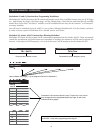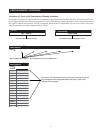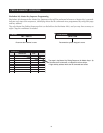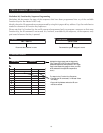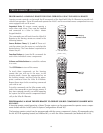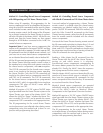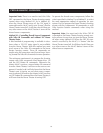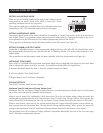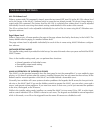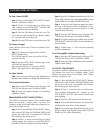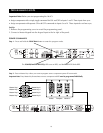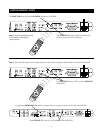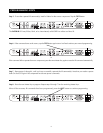
Important Note: There is no need to teach the Niles
OFF command to the Home Theater learning remote
control when using Method #2. As in Method #1,
when the Home Theater turns off, the 12V signal is
removed from the A4.6Ci and it now “knows” that the
Home Theater turned off. It will then check if there are
any other zones on the A4.6Ci before it turns off the
shared source components.
Method #3 – Controlling Shared Source Components
with Niles IR Commands and without 12V Home
Theater Status
A third method of programming is available in situa-
tions where a 12V DC status signal is not available
from the Home Theater. With this method you must
teach some of the Niles IR commands to the home
theater learning remote. These IR commands are
taught using the same steps used for teaching a learn-
ing remote the Niles IR commands for zone operation.
The minimum requirement is to program the learning
remote with Niles commands from Master Keys 1-8
and the OFF Button IR commands. Whenever the
Master A4.6Ci receives a source-button IR command
from the Home Theater, it will turn on the source com-
ponent, if needed, and it will also know that the Home
Theater zone is turning on and what source compo-
nent is selected. Whenever the Master A4.6Ci receives
an OFF button IR command from the Home Theater, it
will know that the Home Theater is turning OFF.
To operate the shared source components, follow the
criteria specified in Method 1 and Method 2, to select
the most appropriate method of operation for your
system. You can program the Home Theater's learning
remote with the components' IR commands, or with
Niles function buttons commands when using this
method.
Important Note: You must teach the Niles OFF IR
command to the Home Theater learning remote con-
trol and issue it every time you turn the Home Theater
off when using Method #3. When the OFF IR com-
mand is received by the A4.6Ci, it “knows” that the
Home Theater turned off. It will then check if there are
any other zones on the A4.6Ci before it turns off the
shared source components.
64
PROGRAMMING OVERVIEW



